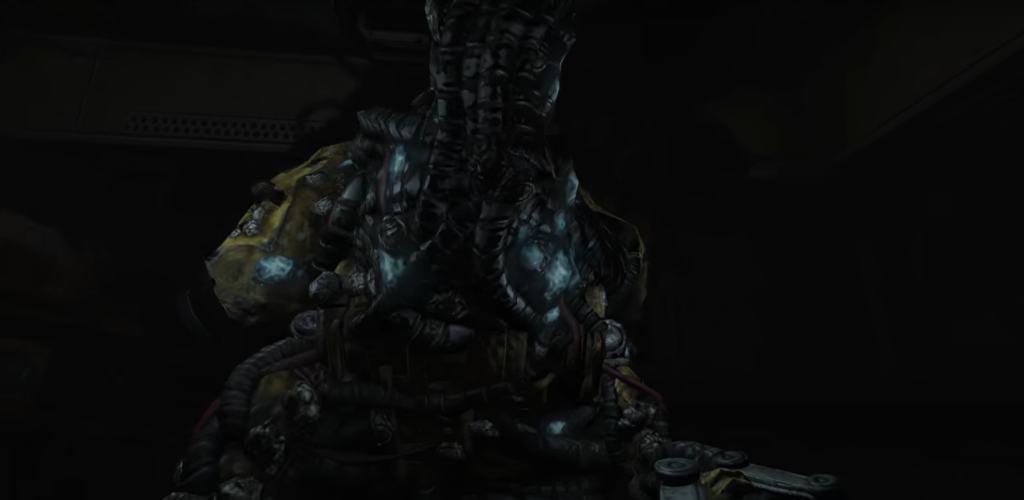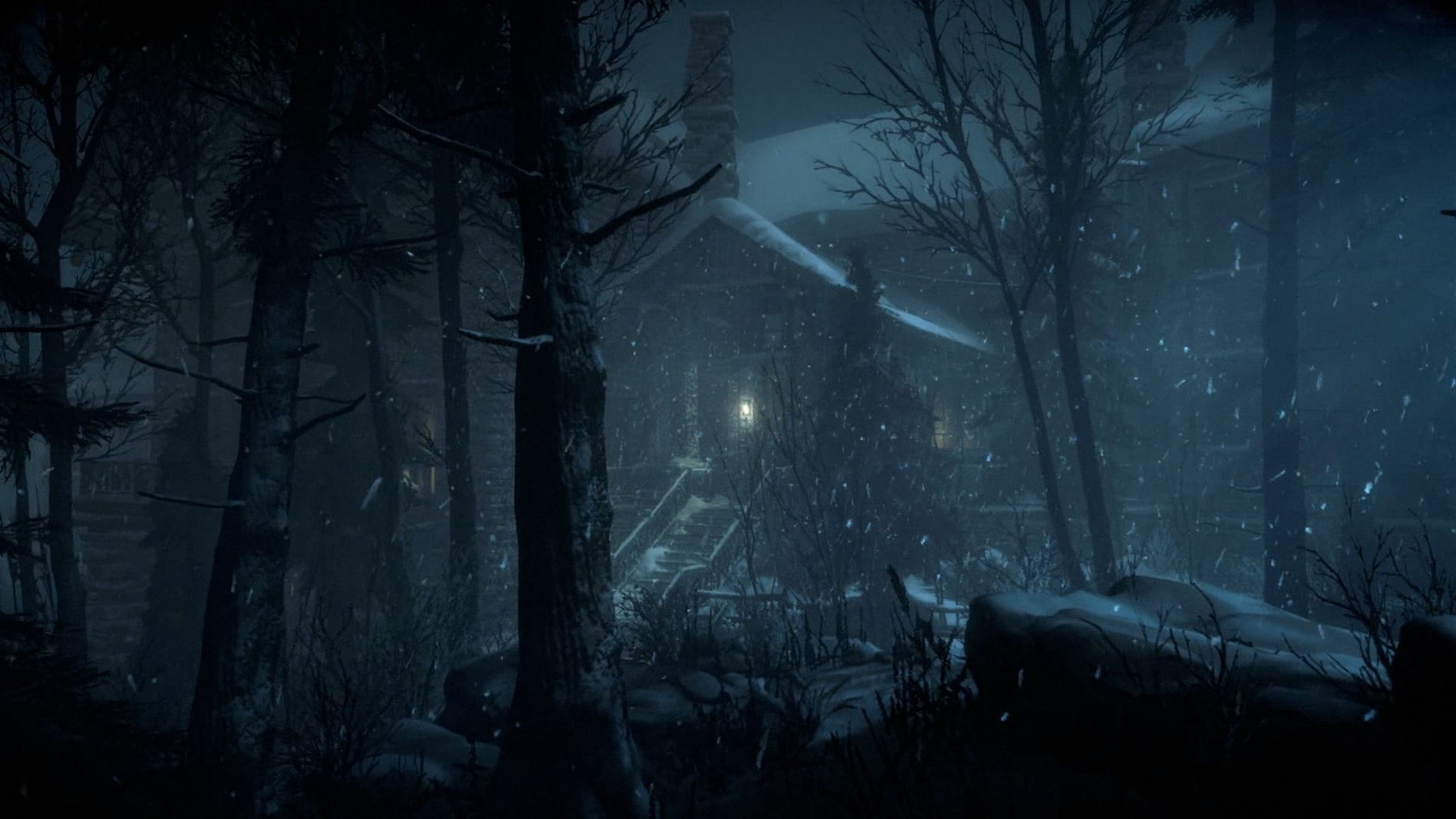In “Losing Control: Until Dawn as Interactive Movie”, Tanine Allison writes that “policing the boundaries between games and films is not merely an abstract exercise.” She goes on to discuss how narratologists and the ludologists both work “to reject the comparisons between films and games,” in regard to determining scholarly communities and academic disciplines. Although very valid points, I think it is interesting to discuss the similarities between these two forms of media and how they work similarly to complete the same goal. Video games’ usage of sound and score to create an atmosphere and environment closely resembles that of horror, showing how games, like films, use music as a means of integrating and immersing the player into the game world.
Horror, as a genre, has always been reliant on sound and music. With every horror movie, there is a new horror soundtrack that succeeds in setting the mood of each scene. Even the lack of music or sound helps create an ambiance that induces dread, trepidation, and fear. Music department chair of Davidson College Neil Lerner expands on the variety of sounds used in movies that signal suspense and indicate emotions. He even discusses how “what would be considered noise, or nonmusical elements, become important parts of the soundscape,” such as ragged breathing, heartbeats, and the creaking of floorboards, evoke feelings of dread, fear, and trepidation.

Unsurprisingly, video games do the exact same thing.
In Soma, when you first arrive in what you would later find out to be PATHOS-II, the game plays dissonant music that varies in pitch in order to put the player in a state of unease as they must map out their new terrain and find the omnitool, similar to a key card, in the dark underwater lab. The music, from its first few tones, is immediately unnerving; with just those few moments, the music has already sucked you into the game, and now your emotions, and then your eventual fear, are connected with the pitch of the music along with your gameplay. A good example is when the player stumbles upon their first Construct, one of the enemies of the game. The dissonant soundtrack is initially mellow and subdued—sometimes to the point of being inaudible, making the avatar’s footsteps and the creaking of underwater pipes the only sounds. Upon stumbling into a dark room that causes the player’s screen to become staticky, the music pitches to a shrill volume, disorienting the player and making them prey to the shocking jump scare.

Likewise, Until Dawn mimics many of the classic tropes of slasher horror and accomplishes this rather well with its music. The game itself has several intense scenes, where like in Soma, music is used to amplify dread and fear, like when Hannah and Beth fall off the cliff in the Prologue or when Chris is chased back to the lodge in Chapter 8. Despite this, the game’s official original soundtrack is only just over an hour long, which is interesting considering that the game averages about 8+ hours of gameplay. This means that the game itself relies more on the “nonmusical” sounds that Neil Lerner described. This is evident in several key moments of the game: Jess being grabbed in the cabin (only her screams and breaking glass), the wendigos breaking into the lodge (only the wendigo shrieks and the character’s ragged breathing), and the dramatic séance with Josh, Ashley, and Chris (only the scratching of the planchette on the spirit board). This decision is quite interesting but seems to still integrate the player into the game: without music, the player seems to be holding their breath, unwilling to break the silence and potentially “alert” anyone that could hear of their location.
In short, music and sound are able to create an immersive horror-game world that full integrates the player into the game while also playing with the player’s emotions in order to create an enhanced experience. This brings into question whether music has the same effect in other non-horror games, and what else music could provide for a game besides ambiance and setting.
Bibliography:
Tanine Allison. “Losing Control: Until Dawn as Interactive Movie.” New Review of Film and Television Studies, 2020.
Jay Pfeifer. “The Sound of Suspense: What makes the music of horror films so chilling?” Davidson, 2019. davidson.edu/news/2019/10/31/sound-suspense-what-makes-music-horror-films-so-chilling. Accessed October 11, 2021.


Apologies for always going back to Animal Crossing, but a big part of the Animal Crossing culture is reliant on the calming soundtrack behind the game, so much so that there are entire YouTube channels dedicated to the soundtrack itself. Like you mentioned, as important as music scores are to horror (or lack thereof in horror) in both enhancing the eerie effect of the game itself as well as in intensifying certain negative emotions, the same factor occurs with happier emotions such as relaxation or excitement. Besides the overall background noise that changes with the time of day within Animal Crossing, there are also certain achievement noises associated with successfully catching a fish or digging up a fossil. All this interestingly enough serves to create a mild sort of game that plays on a player’s relaxed state by giving them easily achievable tasks to keep their focus. Great article!!
I really enjoyed reading your post, especially the discussion of the soundtrack in Until Dawn. I was particularly interested in the idea that most of the scenes are characterized by sounds rather than scored musical soundtracks, especially how these sounds build tension in moments of quick-time decisions. These suspenseful moments are often enhanced by sounds, specifically, the “Don’t Move” moments, in which the player can hear a heartbeat rhythm. If the player moves the controller too far out of the designated area, the beating heart speeds up, thereby increasing the stress felt by the player in real time. Even though the heartbeat that is heard is not the player’s own, these sounds induce a stronger emotional response to the sudden life-or-death decision. These dynamic sound effects enhance the thrill of the gameplay and add to the many factors that make playing Until Dawn such an engaging experience.
I found your discussion of the non-musical sounds interesting, though noticed that you seemed to primarily focus on the significance of the absence of music to the situation, rather than the sounds themselves. In horror, where the sounds are often meant to break the silence, the lack of music is often the most prominent aspect of these moments, but in other situations the sounds in the environment can tell you a lot about the situation and environment you’re in.
Taking The Legend of Zelda: Breath of the Wild as an example, there’s obviously the mechanistically important sounds of enemies which can help you find where they are, and tell you if they’re alerted to your presence, but there are plenty of other sounds that are important to the way the game feels. They include sounds that give information about the characters, like footsteps or the rustling of clothes, which use different recordings when you’re sneaking or using stealth (as opposed to just lowering the volume of the sounds), which helps sell the idea that you’ve actually changed the way you’re moving rather than just magically gotten stealthy. There are environmental sounds like the chirping of birds or the burning of flames, the latter of which changes to more controlled or erratic sounds depending on what type of fire it is. There are also non-diegetic sounds, such as certain drum strikes that play timed to the next beat when you hit an enemy in battle. The sounds themselves increase the impact of the blow, while the timing creates a feeling similar to that of an action movie or animation, where the blows will be timed to the rhythm of the music.
Sounds can do a lot for the feeling and environment of a game, even outside the horror genre.